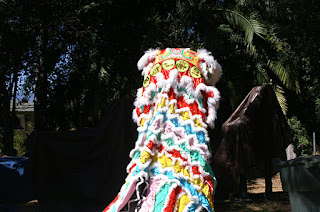Since the book came out it's been great to see what an impact it has had on the lion dance community! The number of people who are interested in learning about the lion dance in general is relatively small when compared to other sports and activities, and of those the number who are interested in learning about building lions on their own is even smaller. Then from those, the ones who are really willing to invest the time and effort needed to really learn and understand the art are even less. By making a resource available I hope to increase that number so the art will have an even greater reach and generate even more interest.
Knowing there was a very limited market for the book, I figured only a few people might be interested in it. I also thought most would be in the US. So far Restore the Roar has exceeded my expectations and has been purchased by craftspeople on five of the seven continents (Asia, Australia, Europe, North America, and South America)! I'm not holding much hope out for Antarctica, but I do know a few groups exist in Africa so there may be an opportunity to expand to one more.
The widespread interest in learning this tradition can only be good for ensuring it continues to grow and thrive into the future. It's honestly a pretty great feeling to know I played a small role in this movement.
So far I've seen some pretty great projects come out of it from other people. If you have your own lion restoration or building project, please let me know. I'd love to see what other people are doing and learning about the craft so we can all learn and grow together.
What started out as a childhood interest and a small side project has really grown. Thank you to the many great people who have become a part of it and keep me inspired to continue working and sharing.

























































